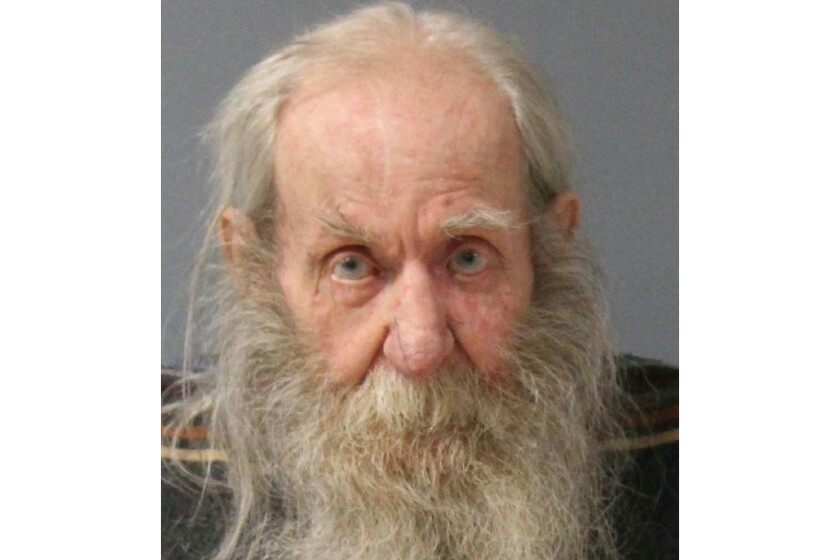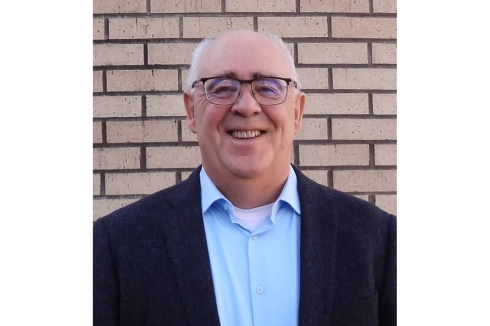OWATONNA, Minn. — At about 10:30 in the morning on Feb. 15. 1974, Mary K. Schlais left her home in Minneapolis, planning to hitchhike to an art show in Chicago.
She never made it. And for decades, people were left to wonder: Who killed Mary?
ADVERTISEMENT
After 50 years, the answers seem to be coming thanks to modern DNA testing, dogged detective work and a determination to bring some justice for Mary Schlais half a century later.
Witness and body
Later that day in 1974, according to statements from Dunn County law enforcement — both today and then — a body, later identified by her brother Don Schlais as Mary Schlais’ body, was found near a remote intersection of 990th Street and 408th Avenue in the Township of Spring Brook in Dunn County, roughly 15 miles east-southeast of Menomonie, Wisconsin.
"Mary Schlais’s body was found in a snowbank and she had multiple stab wounds on her upper body, including on her back," states a criminal complaint filed Nov. 11, 2024. "She also had what appeared to be defensive wounds on her hands."
The official cause of death was exsanguination, the medical term for blood loss.
A witness saw a suspect and vehicle near where the body was found, but that lead did not produce a suspect.
Also at the scene, an orange and black stocking cap was found on the roadway near Schlais’ body. The cap was collected as evidence, and hairs in the cap — later determined not to belong to Schlais, were also collected as evidence.
Those hairs and DNA evidence from the cap would later help break the case. But in 1974, the technology to follow those hairs to the alleged killer did not exist.
ADVERTISEMENT
The long haul
"Over the years, continuous leads were followed up by the Dunn County Sheriff’s Office with no avail," the criminal complaint read.
But the murder of this young woman, a woman just passing through Dunn County on her way from one big city to another, was never forgotten.
"If you worked for this agency for any time, you knew about Mary Schlais and her case," Dunn County Sheriff’s Sgt. Jason Stalker said at a Nov. 11, 2024, press conference.
The case, Stalker said, has been open and ongoing for the last 50 years, and the Dunn County Sheriff’s Office has been aided by other agencies through those many years.
That included trying to match the hair samples with other hairs through the years, coming up with a profile of a male suspect, and even exhuming Mary Schlais’ body at one point to look for more clues.

Missing family member
The case began to make progress in fall 2022 when the sheriff’s office sought to partner with Rampano College in Mahwah, New Jersey. The college offers investigative genetic genealogy (IGG), a tool that takes advantage of commercial genealogy testing to help match suspect DNA with DNA uploaded through databases from commercial testing.
ADVERTISEMENT
Because of the popularity of such testing, David Gurney, a professor at Ramapo College’s Investigative Genetic Genealogy Center, said the program has helped identify 17 suspects since its inception.
Jon Keith Miller is one of those suspects.
Investigators at the college linked the DNA taken from the 1974 crime scene to a man in Montana who was shown to be a first or second cousin to the crime scene DNA sample.
In January 2024, investigators from the sheriff’s office traveled to Montana, interviewed the man and took a new sample. While that man was not a full match to the suspect DNA, sheriff’s investigators and those at Ramapo College hoped to find more leads.
They did just a couple months later. This time, it was a man in Michigan who was also shown to be a cousin of the DNA sample.
These two men represented the extent of all men in that age range within that family lineage. At first, this seemed to be a roadblock in the investigation, said Cairenn Binder, assistant director of the IGG Center at Ramapo College.
But investigators came up with a hypothesis: What if there was another male within the lineage who had been adopted?
ADVERTISEMENT
Binder said investigators did not need access to adoption records or other sealed information. But good old-fashioned detective work uncovered Miller.
Investigators then approached Miller’s biological daughter and received a genetic sample from her. Using that, they were able to determine that her parent — Miller — was the likely match to the DNA sample from the crime scene in 1974.
Knew why they were there
When Stalker and investigator Dan Westlund of the Dunn County Sheriff’s Office arrived at Miller’s apartment in Owatonna, Minnesota, he knew why they were there.
In the criminal complaint, it describes how Miller admitted to picking up Schlais as a hitchhiker. At one point, he asked her for sex, and when she declined, he said he took a knife from the visor and stabbed her when she leaned forward in her seat.
"Miller stated he got off the next exit on the highway and attempted to hide the Schlais’s body in a snowbank," the criminal complaint read. "Miller began to cover her up with snow, but then another vehicle drove by. Miller then got scared and left the area."
When shown a photo of the stocking cap, Miller said it was his and that he must have lost it during the incident, the complaint read.
After 50 years, the Dunn County Sheriff’s Office was able to call Don Schlais and tell him they’d finally found his sister’s killer.
ADVERTISEMENT
"This is about justice for Mary and bringing closure to her family," Binder said.












